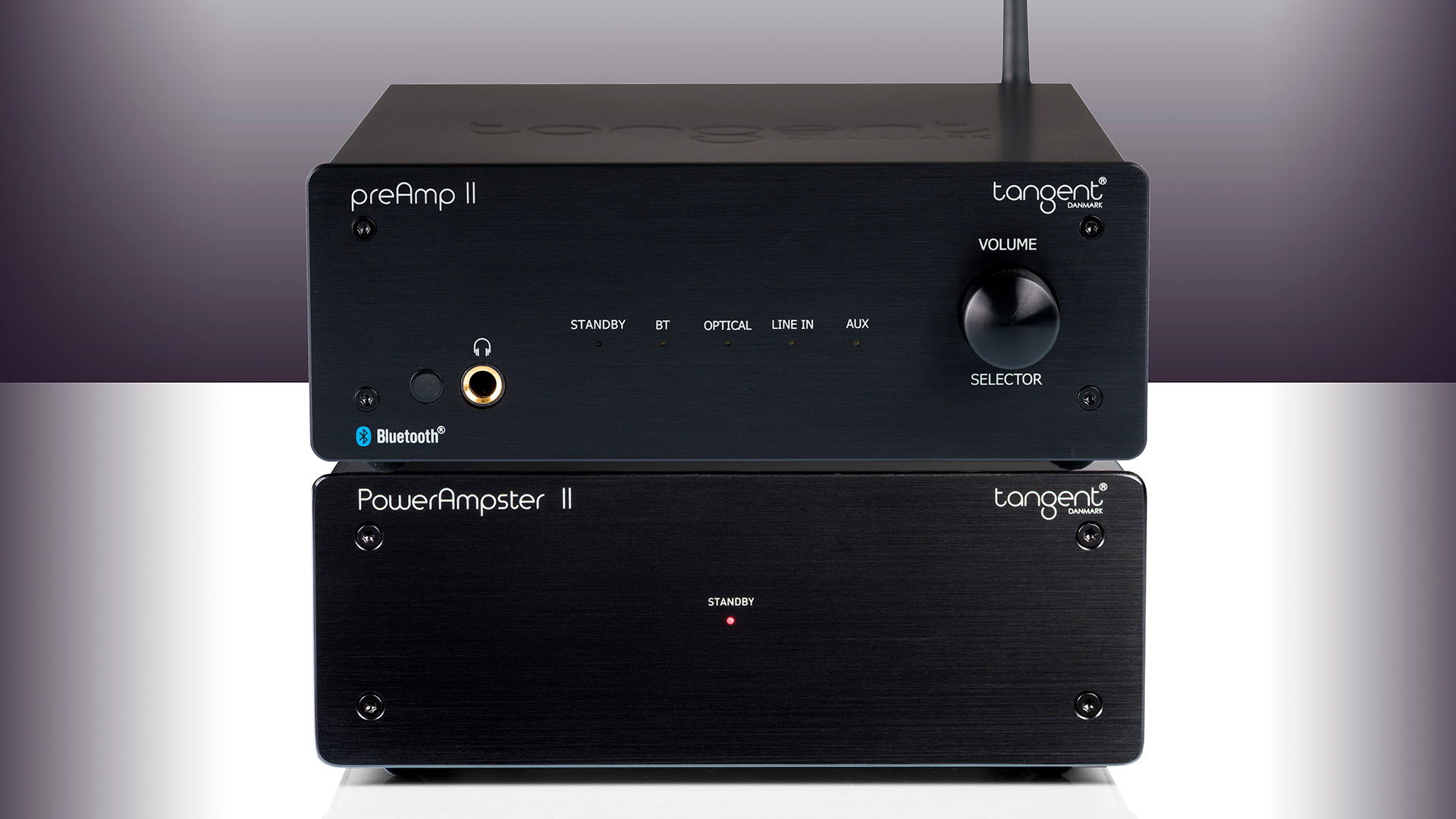Danske Tangent produces hi-fi equipment at absolutely affordable prices for everyone. And even if the price is at the level of pocket money, we have been pleasantly surprised by the sound quality several times.
However, it still came as a surprise when Tangent launched PreAmp II and PowerAmpster II this spring. Partly because they launched the news in connection with the high-end fair in Munich, and partly because it is an amplifier with separate hi-fi pre-amp and power amp at a price equal to a multi-room speaker. The PreAmp II costs 199 Euros and the PowerAmpster II costs 269 Euros.
PreAmp II and PowerAmpster II are sold separately, but we have chosen to test the kit together, as it will likely be sold together in most cases. However, we also listened to the parts separately and also tested with two bridged power amps. We will come back to this.
The PreAmp II and PowerAmpster II are also exactly the same size and match Tangente Ampster BT II, which we tested earlier. It makes good sense. Either because you save money by being able to use the same cabinet for multiple models, or because you can build a small stereo rack along with the matching radio tuner and CD player.
At just under 20cm wide and 7cm high, stereo components don’t take up much space. In the eyes of some, it will be an advantage. Although buyers of separate preamps and power amps very often believe that the system should preferably be of a certain size.
Tangent Preamp II
The PreAmp II has a screw knob on the front plate that acts as a volume control, input selector and on / off button. A series of LEDs indicate which input is selected. The small preamp has enough inputs to meet the needs of most people: an optical input for a CD player or TV, wireless Bluetooth reception for streaming from a mobile phone and computer, as well as a line input that can be changed to a turntable input. The latter lacked the cheaper Tangent Ampster BT. There is also an additional line input with a 3.5mm minijack for, for example, sound from the computer.
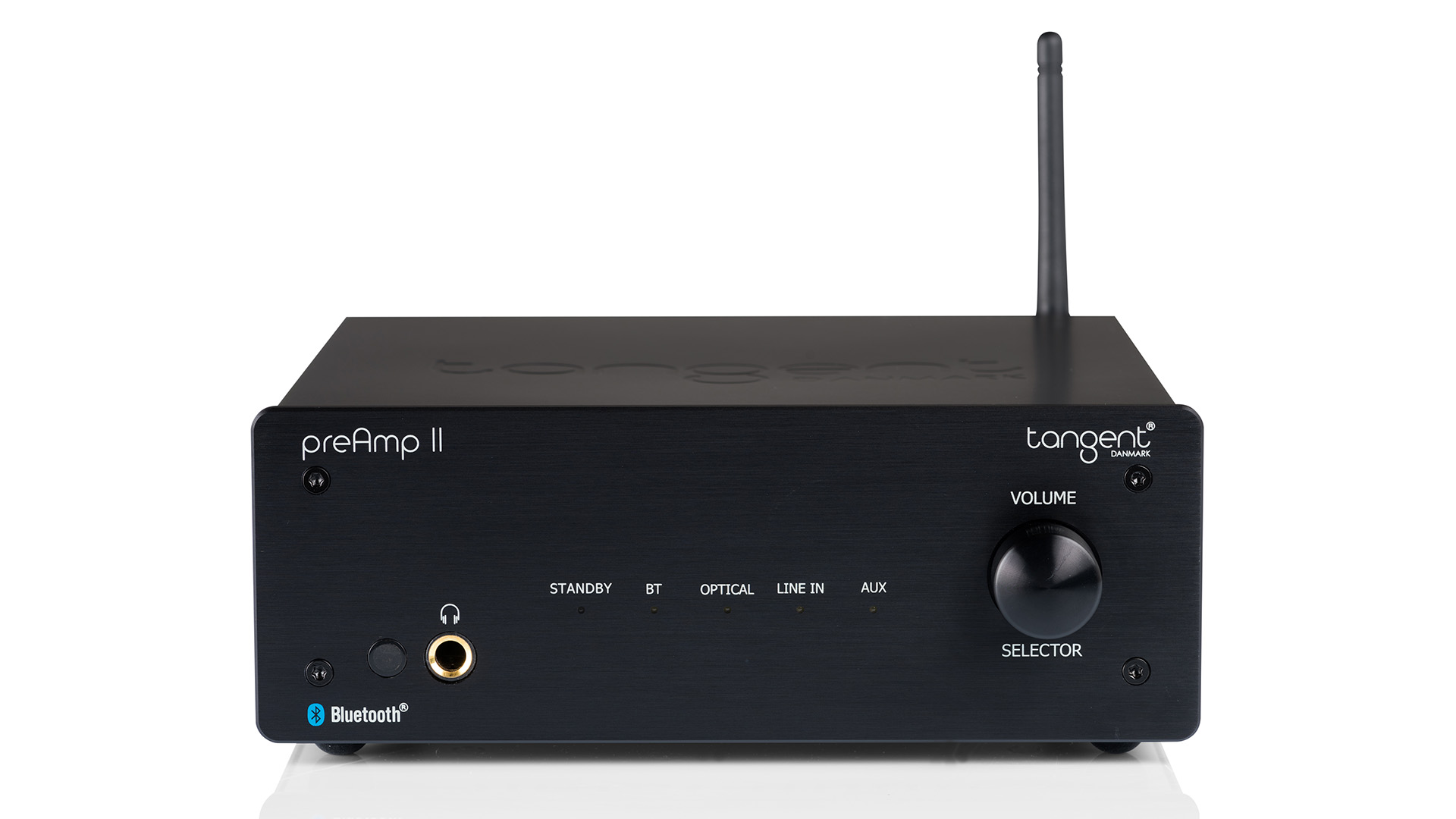
There are of course outputs for power amplifiers. Either in the form of regular single-ended RCA connections or balanced XLR outputs. The latter is amazing on such a cheap device. But it makes sense thanks to an intelligent circuit solution in the power amplifier. There is also an output for an active subwoofer.
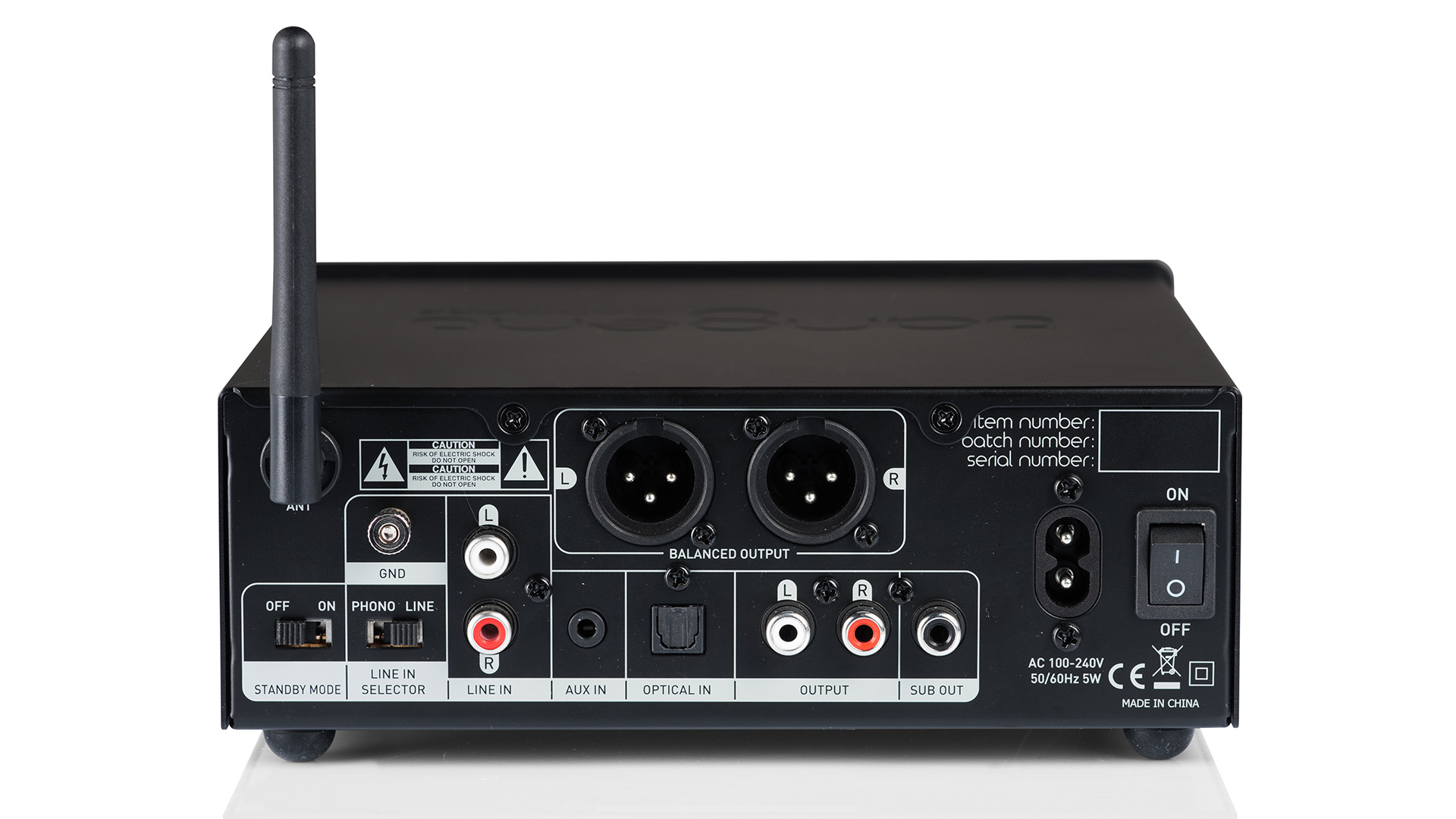

Tangent Power Amplifier II
PowerAmpster II is even easier to use. There are no buttons on the front panel. Not even an on / off button. The power amplifier turns on and off by itself, depending on whether there is an input signal. And it only consumes half a watt at idle.
Between the inputs and outputs, there are line inputs with balanced RCA and XLR connections. The speaker terminals are of a fairly decent quality. And much better than what can be expected at this price. There is also an – almost invisible – switch between stereo and mono operation. The power amplifier can be bridged. And this is where the intelligence of balanced inputs comes into play.
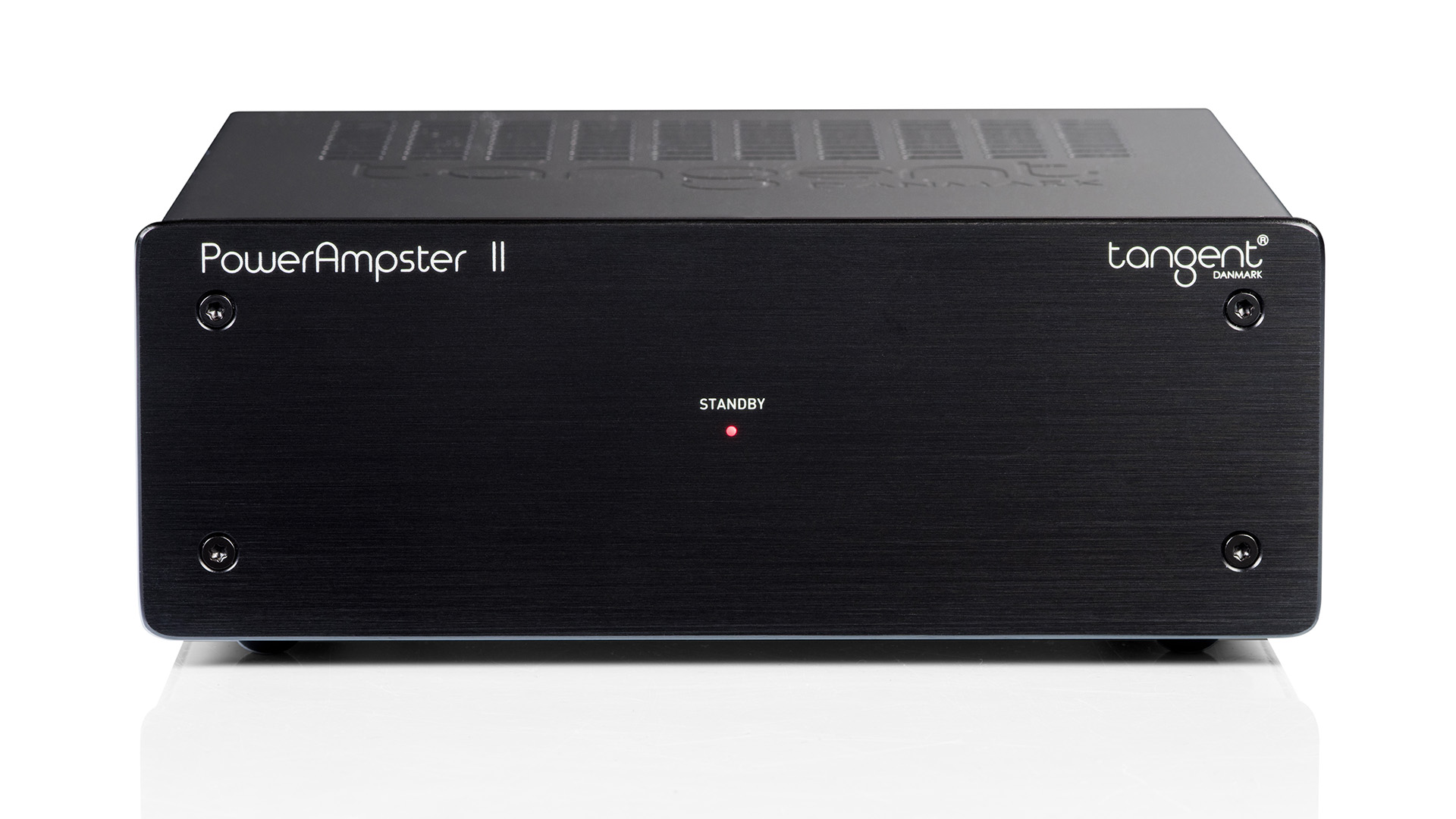

When connecting an amplifier, the two channels work in anti-phase and the loudspeaker signal is tapped between the positive poles of the two outputs. And instead of building a phase reversal circuit in the PowerAmpster II, Tangent takes advantage of the fact that a balanced connection already receives two versions of the signal in mutually opposite phase. The downside is that you can only connect the PowerAmpster II via the balanced input.
The amplifier delivers 100 watts in class D during normal operation and 200 watts bridged. Tangent does not mention at what impedance the figures are measured.
The quality of the sound
The Tangent amp set is easy to use and easy to live with. The sound is pleasant and without sharp edges or a tendency to harshness. And there is enough power to drive most speakers that it is realistic to combine the set with. This means compact speakers and speakers with moderate sensitivity and in smaller rooms. And that’s all you can reasonably ask for from a separate amplifier for such a ridiculous price.
But of course we couldn’t help but hear the Tangent set more thoroughly when we were there. And it does most things well, as long as you don’t make tough requests. First of all, the bass is in good order. Rap and pop and most electronic dance music sound good and you can play loud enough to warm the room before the party continues in town.
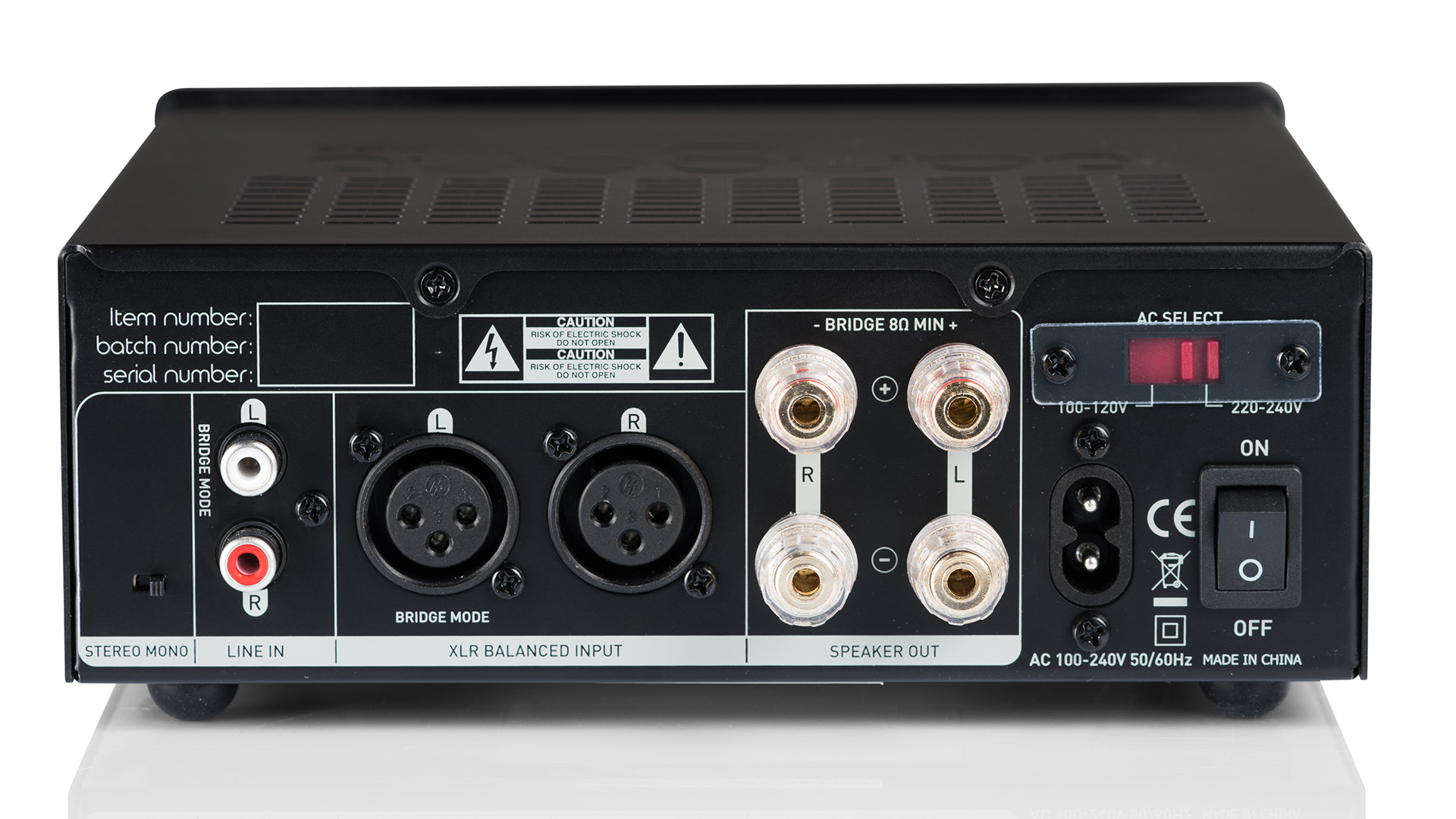

There is actually a certain sense of space and depth in the soundscape as well. Enough to hear the difference between a good hi-fi recording and a less good one. And vote, for example, on your preferred test number Right-handed man from Hamilton, it actually sounds quite natural.
But don’t look at anything more complicated than that.
Nuance and resolution are neither the preamp nor the power amp’s strong point. In fact, I would have gladly traded much of the raw power for better acoustic overview. On the cover edition of Disturbed’s Sound of silence you can guess just as accurately how the entry in the introduction is made up of several layers of recordings. But when the orchestra finally breaks loose, everything becomes a confused sound wall, where it is impossible to distinguish the instruments from each other. For example, I know there’s an acoustic guitar somewhere down there, but I can’t hear it. The amp clearly has an excess of power to play much louder, but is unable to reproduce the details.
I also tried to stage Keith Jarrett’s Cologne concert. I regretted it. Although there is only one tool in the recording, the task was clearly too big.
We had two PowerAmpster IIs at our disposal during the test, so of course we had to try to connect them. The doubled power and the same power reserves gave an extra surplus to the already good bass reproduction. It was a pleasure to hear the wonderful interaction between Jonas Hellborg and Ginger Baker Time is time. But bridging solved a problem that didn’t really exist. The weakest point of the otherwise successful amp set is not the output power, but the nuance capability. And that didn’t change the bridge.
Making such a large number from shortcomings can seem difficult. And this should be seen more as ideal requirements in a perfect world than as a critique of the Tangent as a whole. Because we are dealing with very cheap amplifiers, and it’s hard to find something that costs so cheap! If you can settle for a minor effect, it is Argon SA1 however, it is worth considering. And if you need a few more watts, and therefore consider the bridge solution, it might be worth looking at power amps like Harman Kardon Citation Amp.
Conclusion
The Tangent PreAmp II and PowerAmpster II are something as unique as an amp kit with a separate preamp and power amp at such a low price I haven’t seen anything like it since the 1980s. If you want a “classic” hi-fi feel, but only have a free budget at your disposal, the Tangent set can be your ticket. In terms of sound, you are also quite well covered. Preserved, the sound is not particularly nuanced and complex music must be avoided. But it’s nice to have a bass boost and the sound never gets unpleasant or high-pitched. With an additional power amplifier, you can play very loud. If you don’t need the same power, and otherwise can settle for a single device instead of two or three, you can get just as good sound in many other places.
–
